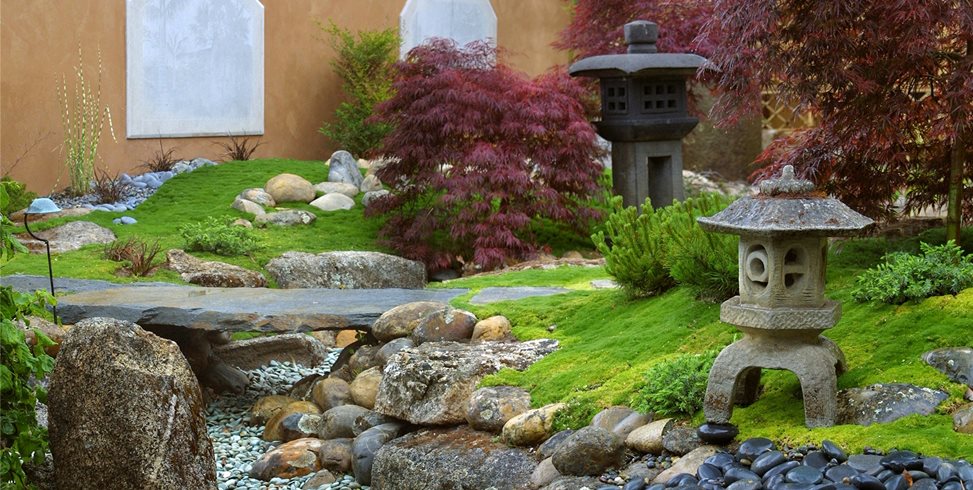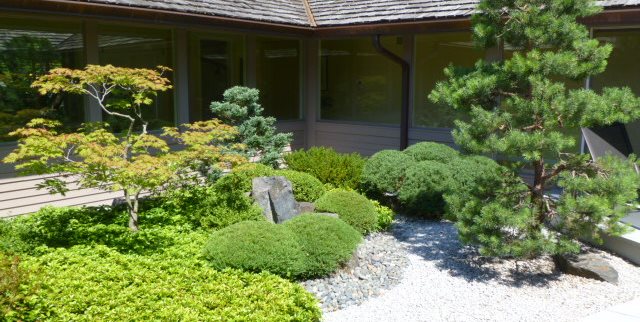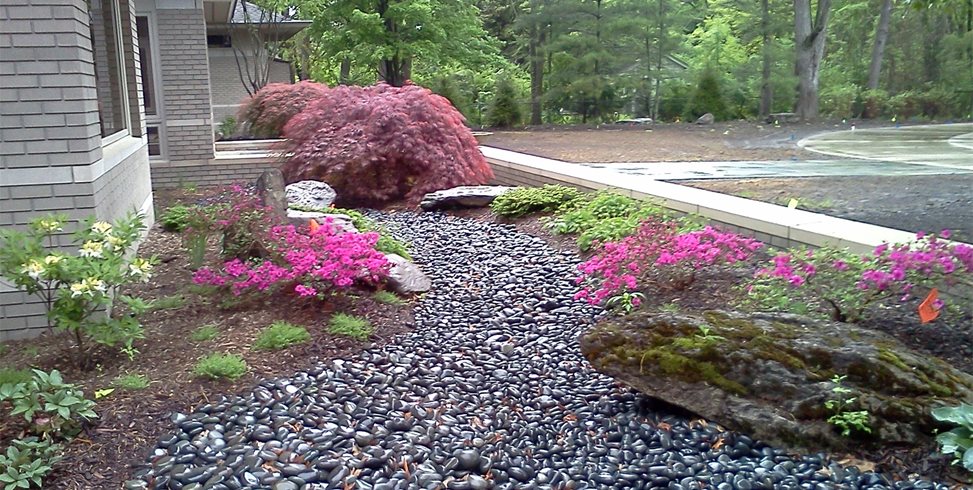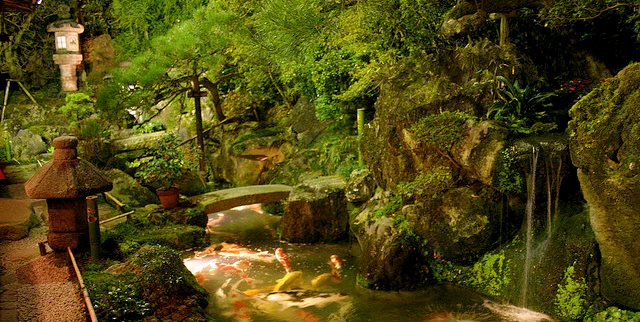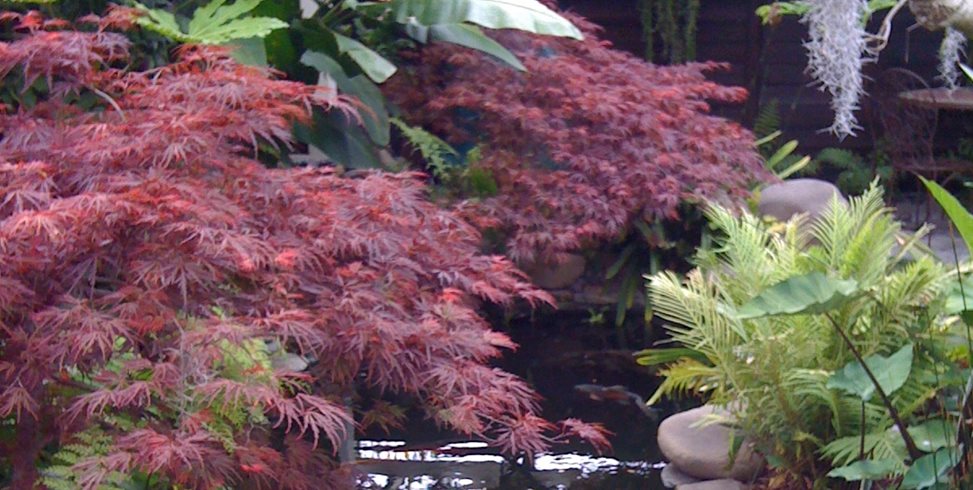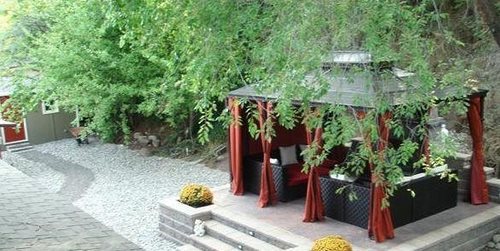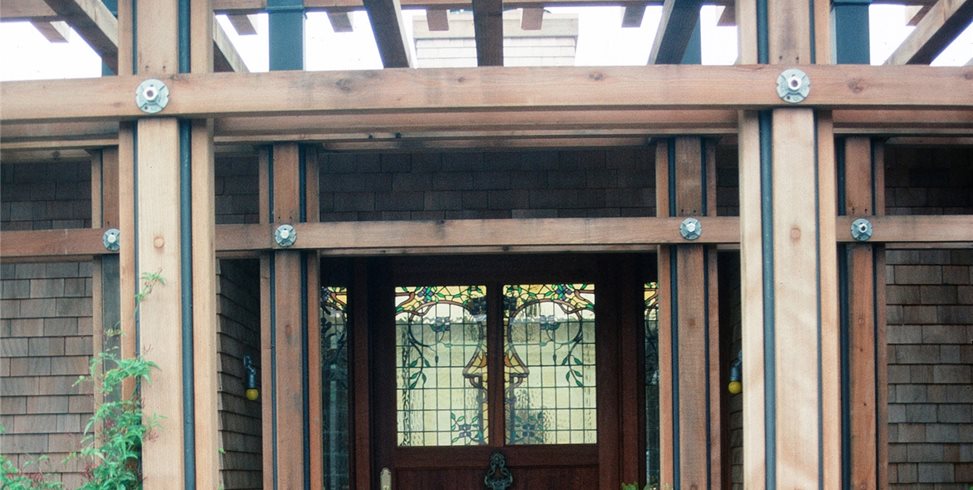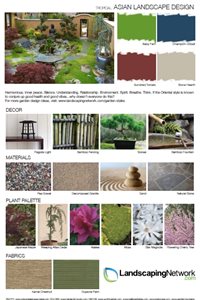Japanese Garden Design
Ideas for Japanese style landscapingAsian Landscape Style Guide
Use this design sheet to help you create the perfect Asian landscape. You'll get ideas for color, décor, materials, plants and fabric. It is a great starting point for any landscaping project.
Asian Landscape Style Guide (PDF)
View all Landscape Design Style Guides
Traditional Japanese gardens are designed for peaceful contemplation. They draw heavily on Buddhist, Shinto and Taoist philosophies and strive to provide a spiritual haven for visitors. The primary focus of an Oriental garden is nature. The elements of a Japanese garden mimic or symbolize natural elements. Thus, geometric shapes and artificial stone are not common in Asian landscape design. The more natural and harmonious a garden is, the more conducive it is to contemplation.
There are four essential elements used in Japanese garden design: rocks, water, plants, and ornaments. When selecting and arranging these elements in your space, it's important to keep in mind the main design principles of a Japanese garden, which include asymmetry, enclosure, borrowed scenery, balance and symbolism. These principles will work together to create the proper balance in your Japanese garden.
Get these tips:In this section, you'll find tips from landscaping professionals on:
- Choosing simplistic and natural paving materials for a Japanese garden, including gravel, natural stone and exposed-aggregate concrete.
- Ideas for "softening" the edges of paved patios and walkways by avoiding straight lines, emphasizing free-form and organic shapes, and using ground covers to disguise the edges.
- Good plant selections for a Japanese garden, emphasizing evergreen varieties in various shapes, sizes and textures.
- Choosing trees for a Japanese garden that symbolize strength and endurance.
- Recommendations for choosing and arranging rocks in a Japanese garden to create artistic focal points.
- Types of rocks that work well in a Japanese garden and how to find affordable sources for rocks.
- An overview of the key decorative ornaments that no Japanese garden should be without.
- How to incorporate stone lanterns, rain chains and other traditional Japanese garden décor into your landscape.
- Ideas for Japanese-inspired water features that include elements such as bamboo water spouts, stone basins, waterfalls and Koi ponds.
- How to represent water in a Japanese garden by using gravel or sand raked in wave-like patterns.
- Choosing furniture pieces, styles and materials that blend well in a Japanese garden
- How to enclose a Japanese garden to create a tranquil environment for contemplation.
- Ideas for using bamboo fencing or premade bamboo fence panels to enclose your garden in traditional Japanese style.
- Creating a welcoming entrance to a Japanese garden using Torii gates, arbors, or potted bonsai trees.
- Common bridge styles used in a Japanese garden, including a simple wooden arch bridge and a flat, zigzag bridge.
- How to bring the art of Japanese cooking to your garden with an outdoor teppanyaki grill, or flat-iron griddle.
The best Japanese garden designs will emphasize the concepts of asymmetry and balance in the use of their essential elements.
To see how this style might work on your property, consider working with Tilly Design to get a full design mockup for your yard.

 Backyards
Backyards
 Front Yards
Front Yards
